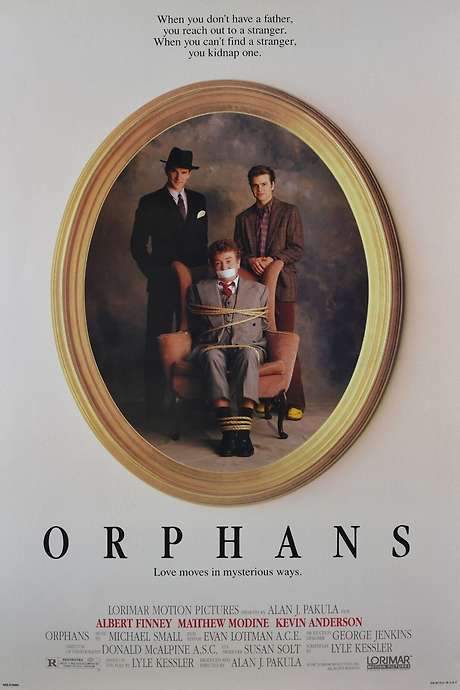
On Borrowed Time
Year: 1939
Runtime: 99 mins
Language: English
Director: Harold S. Bucquet
Orphaned boy Pud lives with his elderly grandfather, with whom he is inseparable. The grandfather worries about Pud’s future and a scheming relative trying to gain custody. When Death, appearing as Mr. Brink, arrives to claim the grandfather, he tricks Death into being trapped in a large apple tree, buying extra time to secure Pud’s future.
Warning: spoilers below!
Haven’t seen On Borrowed Time yet? This summary contains major spoilers. Bookmark the page, watch the movie, and come back for the full breakdown. If you're ready, scroll on and relive the story!
On Borrowed Time (1939) – Full Plot Summary & Ending Explained
Read the complete plot breakdown of On Borrowed Time (1939), including all key story events, major twists, and the ending explained in detail. Discover what really happened—and what it all means.
Mr. Brink, the elegant and aloof personification of death, arrives in Pud Northrup’s life after a car accident takes Pud’s parents. The old man known as Gramps greets Pud with warmth and a stubborn gentleness, and the pair forms an unlikely bond in the quiet world they inhabit. Gramps, a guardian in the making, is a figure of quiet resilience, and Pud—curious, brave, and loyal—begins to navigate a mysterious shift that will test faith, family, and the mysteries that lie beyond the veil of everyday life. In this circle of affection, Gramps shares a remarkable idea: he grants a magical wish that makes anyone who climbs up the old tree stay there until he says they may climb down. It’s a playful, uncanny safeguard that frames the story’s emotional center.
But the tree’s spell is more than a trick; it becomes a symbol of life’s fragility and of Gramps’s stubborn insistence on protecting Pud. When Pud briefly lets go of a branch, he discovers the limits of the wish, testing Gramps’s permission and the stubborn will that holds their world together. The spell’s consequences unfold with quiet drama, and the old man’s insistence that Pud stay safe becomes a stubborn, tender vow he cannot easily break. The woodbine blossom in the tale is a line between life and death, a line that Gramps tries to redraw with care and love.
Aunt Demetria, Pud’s formidable guardian in the making, is determined to claim Pud and the inheritance that seems to hover over his head. Demetria’s scheming drives a wedge between Pud and Gramps, prompting a near-fatal heart scare for the old man when the family’s grief-stricken circle collides with greed and control. Miss Nellie Northrup, known to Gramps and Pud as Granny, worries about Pud’s future and the influence Gramps holds over him. The house’s quiet rhythm is disrupted as Demetria moves to assert herself in court, while Aunt Nellie’s practical concern and Granny’s stubborn warmth anchor Pud’s world. Miss Nellie speaks with a grandmother’s ache, and her wartime wisdom—though spoken softly—carries the weight of generations.
In the middle of this, Marcia—played by Una Merkel—brings a steadying presence to the household. She helps Gramps see that Pud’s innocence is a treasure worth safeguarding, even as the elder’s stubborn devotion to his rules is tested by the harsh pull of practical reality. The doctor, Dr. Evans, begins as a skeptic but gradually grows into a believer. He sees Death as more than rumor or superstition and realizes that the old man’s invisible friend might hold a key to easing human suffering. In the hospital’s sterile corridors, he witnesses the delicate balance between mercy and deliverance, and he becomes a quiet advocate for a different form of release—one that honors both life and the toll of unrelenting grief.
Gramps’s world collides with the law when Grimes, the orderly who has become a steady presence in Pud’s life, arrives on a mission that risks ripping Pud away from the only family he has left. The tension between guardianship and institutional care drives the drama toward a tense climax, where the lines between reality and the fantasy of Death blur. The moment when Gramps holds a gun and commands Dr. Evans to prove his own belief in Death’s reality is charged with fear, faith, and a stubborn longing to keep Pud whole. In that crisis, the hospital test becomes a witness to a larger truth: grief can bend, but love can bend it back.
The film threads its way toward a clever and moving rescue of Pud from a future shaped by Demetria’s plans. By crafting a ruse that convinces Demetria and the Sheriff to join Mr. Brink in stepping away from Pud’s fate, Gramps shows that cunning compassion can triumph over vanity and control. The plan, supported by Marcia and the others who believe in Gramps’s vision, hinges on a final act of trust between Pud and his guardian. As the plan closes in, a bird’s death on the tree becomes a grim reminder of mortality’s reach and the stakes of every choice.
In a culmination that blends sorrow with the spark of fragile hope, Pud climbs the fence that marks his last barrier, and a desperate moment threatens to end in tragedy. Gramps, with Death in the air but enough courage to risk it all, asks Mr. Brink to come down and take them both. The tree’s enchantment releases its grip as Gramps and Pud face what lies beyond in a luminous ascent. The two walk away together, their steps light with a promise and a final, shared question: “Gee it smells good here, Gramps.” In a tender response, Gramps explains that the fragrance comes from the woodbine—the sign that eternity is not an escape but a journey. The two vanish into a radiant horizon, leaving Miss Nellie’s voice lifting from the living world, and Betty the dog rushing to greet them at the threshold.
And so they live happily for all eternity—which, as Gramps would say, is a right smart piece of time.
In the end, the story offers a bittersweet but hopeful meditation on death, guardianship, and the stubborn, steadfast love that can outlast even the most magical of trials. It invites audiences to consider what it means to protect those we love, how faith can coexist with doubt, and how the living carry forward the memory of those who guide us from beyond. Through its gentle humor, quiet religious longing, and softly observed humanity, the film remains a tender testament to the idea that eternity, when faced together, can be a right smart piece of time.
Last Updated: October 07, 2025 at 09:42
Unlock the Full Story of On Borrowed Time
Don't stop at just watching — explore On Borrowed Time in full detail. From the complete plot summary and scene-by-scene timeline to character breakdowns, thematic analysis, and a deep dive into the ending — every page helps you truly understand what On Borrowed Time is all about. Plus, discover what's next after the movie.
On Borrowed Time Timeline
Track the full timeline of On Borrowed Time with every major event arranged chronologically. Perfect for decoding non-linear storytelling, flashbacks, or parallel narratives with a clear scene-by-scene breakdown.

Similar Movies to On Borrowed Time
Discover movies like On Borrowed Time that share similar genres, themes, and storytelling elements. Whether you’re drawn to the atmosphere, character arcs, or plot structure, these curated recommendations will help you explore more films you’ll love.
Explore More About Movie On Borrowed Time
On Borrowed Time (1939) Scene-by-Scene Movie Timeline
On Borrowed Time (1939) Movie Characters, Themes & Settings
On Borrowed Time (1939) Spoiler-Free Summary & Key Flow
Movies Like On Borrowed Time – Similar Titles You’ll Enjoy
About Time (2013) Movie Recap & Themes
Happier Times, Grump (2018) Spoiler-Packed Plot Recap
A Summer at Grandpa’s (1984) Spoiler-Packed Plot Recap
Orphans (1987) Spoiler-Packed Plot Recap
Family Time (2023) Full Summary & Key Details
The Boy with Green Hair (1948) Film Overview & Timeline
The Time Thief (2021) Spoiler-Packed Plot Recap
The Borrowers (1997) Film Overview & Timeline
A Simple Twist of Fate (1994) Film Overview & Timeline
On the Far Side of Twilight (1994) Full Summary & Key Details
Time of Maturity (1976) Complete Plot Breakdown
Bogus (1996) Full Movie Breakdown
An Orphan’s Tragedy (1955) Complete Plot Breakdown
A Tale of Lost Times (1964) Ending Explained & Film Insights
From Time to Time (2009) Detailed Story Recap

















